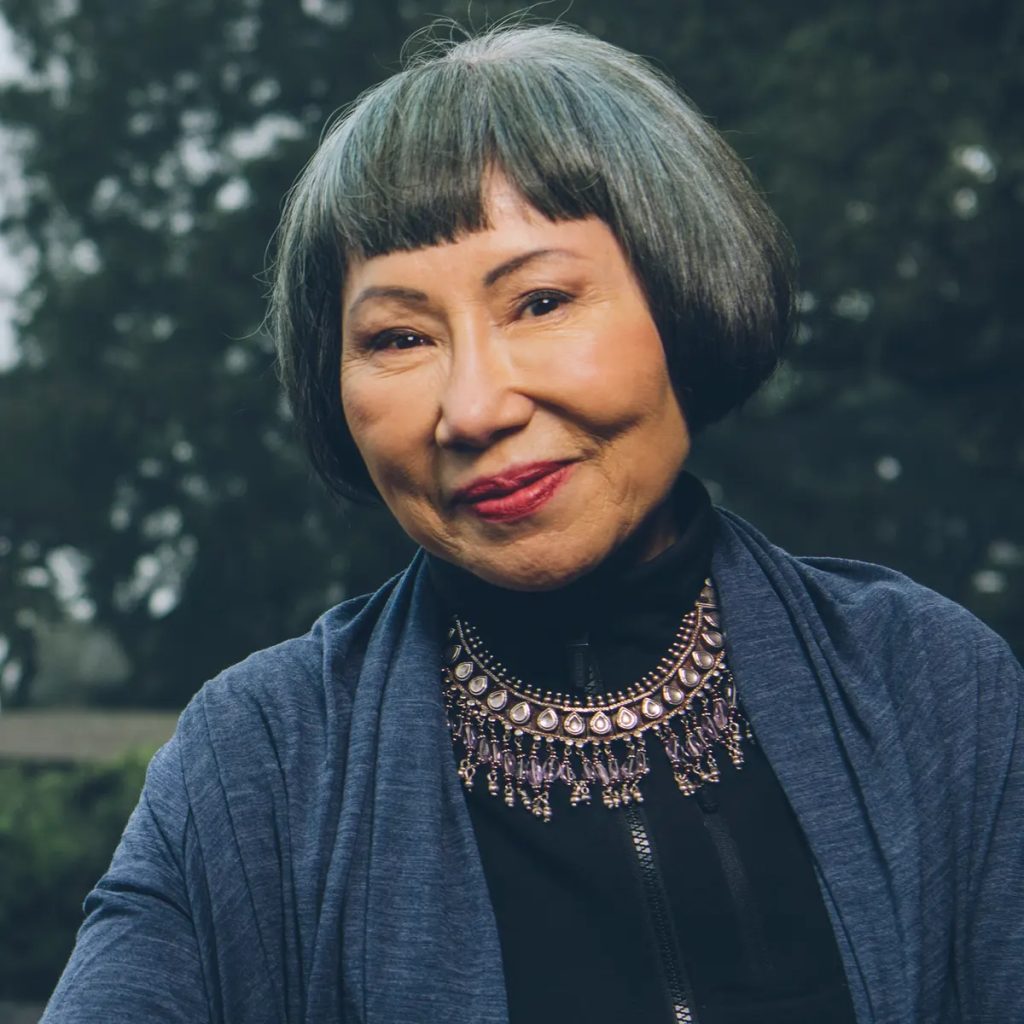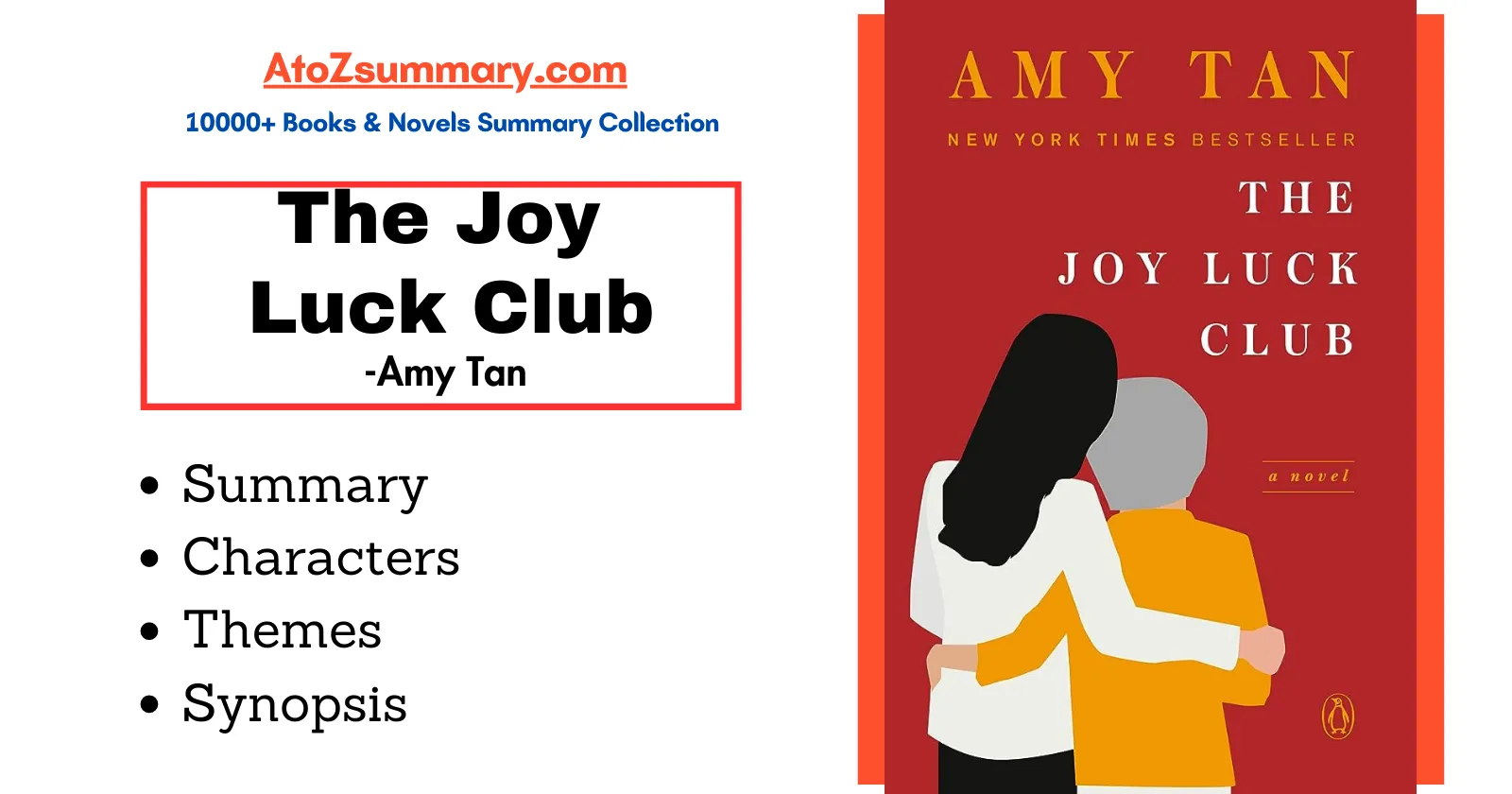| Detail | Description |
|---|---|
| Title | The Joy Luck Club |
| Author | Amy Tan |
| Publication Year | 1989 |
| No. of Pages | 352 pages |
| Genre | Fiction, Historical Fiction, Cultural |
| Setting | San Francisco Bay Area, California, USA |
| Themes | Mother-daughter relationships, Cultural identity, Family, Tradition, Communication barriers, Assimilation, Generational differences |
Characters
The main characters from “The Joy Luck Club” are:
- Jing-mei “June” Woo – The daughter of Suyuan Woo, she tries to understand her mother’s past and her own Chinese identity.
- Suyuan Woo – Jing-mei’s mother who founded the Joy Luck Club, she faced hardships in China and hopes for a better life for her daughter.
- An-mei Hsu – Rose’s mother, she is strong and resilient despite her difficult past in China.
- Lindo Jong – Waverly’s mother, she values traditional Chinese beliefs and strives to protect her daughter.
- Waverly Jong – Lindo’s daughter, she is a skilled chess player and struggles with her mother’s high expectations.
- Rose Hsu Jordan – An-mei’s daughter, she faces a troubled marriage and seeks to find her voice.
- Lena St. Clair – Ying-ying’s daughter, she deals with a strained marriage and her mother’s mysterious advice.
- Ying-ying St. Clair – Lena’s mother, she believes in the importance of understanding the hidden truths beneath the surface.
Themes
The themes from “The Joy Luck Club” are:
- Mother-Daughter Relationships – The book talks about the special bond between moms and daughters, and how understanding each other can be tricky.
- Cultural Identity – It shows how people from different places struggle to fit in and keep their own culture alive.
- Family: The story highlights the importance of family and how it shapes our lives.
- Generational Differences – It talks about how older and younger generations can have different ideas and how they learn from each other.
- Tradition – The book discusses the old customs and values that families pass down through the years.
- Communication Barriers – It shows how language and culture can make it hard to talk and connect with others.
- Assimilation – The story explores how immigrants adjust to a new country while holding onto their roots.
- Sacrifice – It touches on the things people give up for the sake of family and success.
- Power of Storytelling – The characters use stories to share their experiences and wisdom with each other.
Synopsis
The Joy Luck Club by Amy Tan is a novel about the special connections between mothers and daughters. It tells the stories of four Chinese immigrant moms and their American-born daughters.
The moms share their pasts and experiences in a club, while the daughters try to understand their moms and their Chinese heritage.
The novel explores their relationships, challenges, and how they learn from each other’s different worlds.”
Summary
There are sixteen interconnected stories in The Joy Luck Club concerning tensions between Chinese immigrant moms and their American-born offspring. Jing-mei’s journey to China to see her half-sisters, Chwun Yu & Chwun Hwa, is the central plot point of the novel. Because Jing-mei’s mother, Suyuan, was compelled to abandon the half-sisters on the side of the road during her frantic retreat from Japan’s invasion of Kweilin during World War II, they stayed in China. Years later, Jing-mei was born in America to a different father. Suyuan wanted to return to China to get her other daughters, but she could not do so before she passed away.
In the Joy Luck Club, a weekly get-together that her mother started in China and renewed in San Francisco, Jing-mei has assumed her mother’s position while playing mahjong. Lindo, Ying-Ying, & An-mei are 3 of her mother’s oldest friends and other immigrants who are also club members. They inform Jing-mei that Suyuan had finally found her lost daughters’ addresses just before she passed away.
On several occasions, the three ladies nag Jing-mei to go to China and inform her sisters about their mother’s life. However, Jing-mei questions her ability to share her mother’s tale & the three older ladies worry that Jing-mei’s concerns could be founded. They fear that Jing-mei and their other daughters may not be aware of or interested in their moms’ lives.
The book is divided into four sections, each with four distinct storylines.
In the initial four stories in the book, the women, speaking one at a time, recall their interactions with their moms with startling clarity and express concern that their daughters’ memories of them won’t ever be as intense. In the second section, these daughters—Jing-mei, Waverly, Lena & Rose—discuss their memories of their connections with their moms as children. The extraordinary clarity and power they convey in their tales dispel at least some of their mothers’ concerns. The four daughters describe their adult struggles—marriage and career problems—in the third collection of stories.
Although they feel that their moms’ outmoded beliefs do not apply to their very American lifestyles, they find that their interactions with the older generation come up repeatedly as they look for answers. The moms in the last collection of stories fight to help and support their daughters while learning more about themselves. Lindo can admit that American society has permanently altered her through her daughter Waverly. Lena’s marriage to Harold Livotny shows that Lena unintentionally followed Ying-ying’s passive example. She realizes that Rose has yet to grasp the teachings An-mei tried to impart to her about hope and faith.
The first & fourth portions of the book, referred to as the “mothers’ sections,” speak for Suyuan, despite Jing-mei’s concern that she cannot accurately depict her mother’s life. The battle to preserve the mother-daughter link across generational and cultural divides is exemplified by Suyuan’s narrative, which Jing-mei tells as her mother’s daughter, reinforcing and solidifying the same bond that Suyuan’s story is about.
Jing-mei creates two more mother-daughter relationships when she eventually visits China, enabling her half-sisters to connect with a mother they cannot identify. Through her travels, Suyuan’s two lives, two cultures, and mother and daughter are all reconciled. Jing-mei can use this to wrap up and resolve her mother’s narrative and her own. The tour also gives the other Joy Luck Club members hope that they may determine the conflicts between the past and present, cultures and generations, in their lives.
FAQs
What is The Joy Luck Club about?
The Joy Luck Club is a novel by Amy Tan that explores the relationships between Chinese immigrant mothers and their American-born daughters. It delves into their struggles, cultural clashes, and attempts to understand each other.
What genre is “The Joy Luck Club”?
The Joy Luck Club is a work of fiction, specifically falling under historical fiction and cultural genres.
What is the setting of the novel?
The story is primarily set in the San Francisco Bay Area, California, USA.
How is the novel structured?
The novel uses a series of interconnected stories alternating between the perspectives of the four mother-daughter pairs. It combines past and present narratives, revealing both the mothers’ pasts in China and the daughters’ lives in the United States.
Has The Joy Luck Club been adapted into other forms?
Yes, the novel was adapted into a film in 1993 directed by Wayne Wang. It also inspired a play adaptation.
About the Author-Amy Tan

| Detail | Description |
|---|---|
| Full Name | Amy Tan |
| Birth Date | February 19, 1952 |
| Birthplace | Oakland, California, USA |
| Nationality | American |
| Occupation | Author, Novelist |
| Notable Works | “The Joy Luck Club”, “The Kitchen God’s Wife” “The Bonesetter’s Daughter”, “The Hundred Secret Senses” “Saving Fish from Drowning” |


![Juliet Takes a Breath Summary, Themes, Synopsis & Characters [Novel by Gabby Rivera] Juliet Takes a Breath Summary, Themes, Synopsis & Characters [Novel by Gabby Rivera]](https://atozsummary.com/wp-content/uploads/2023/05/Juliet-Takes-a-Breath-Summary-Themes-Synopsis-Characters-Novel-by-Gabby-Rivera.webp)


!["Where the Crawdads Sing" Summary,Themes,Characters & Synopsis [Delia Owens] Where the Crawdads Sing Summary,Themes,Characters & Synopsis [Delia Owens]](https://atozsummary.com/wp-content/uploads/2023/08/Where-the-Crawdads-Sing-SummaryThemesCharacters-Synopsis-Delia-Owens-1024x597.webp)


![Regretting You Summary, Themes, Synopsis & Characters [Book by Colleen Hoover] Regretting You Summary, Themes, Synopsis & Characters [Book by Colleen Hoover]](https://atozsummary.com/wp-content/uploads/2023/05/Regretting-You-Summary-Themes-Synopsis-Characters-Book-by-Colleen-Hoover-1024x576.webp)


